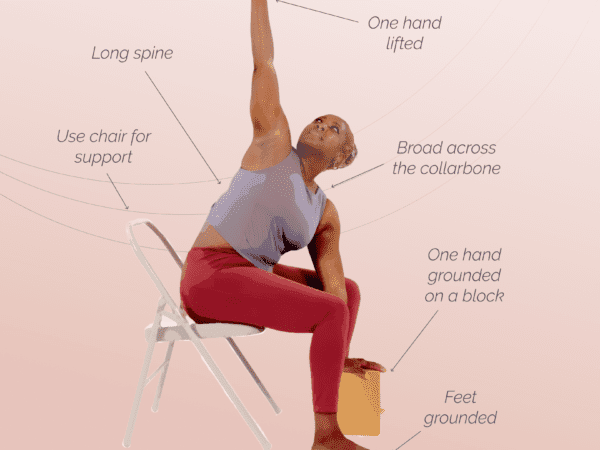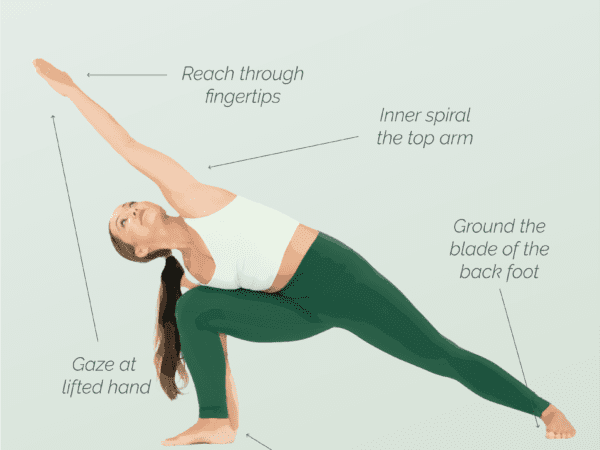Handstand splits, also known as eka pada adho mukha vrksasana, is a challenging yoga pose that requires balance, strength, and flexibility. Performing this asana involves raising your legs towards the sky while balancing on your hands. While it may seem intimidating, with practice, dedication, and patience, you too can master this pose.
What are the benefits of doing a handstand split?
Apart from being an impressive party trick, handstand splits offer a wide range of benefits for both the mind and body. First and foremost, it helps to improve your balance and core strength. The pose requires you to engage your abdominal muscles and back muscles to maintain your balance, which in turn helps to build a strong core. Additionally, it helps to build arm, shoulder, and wrist strength, which can be helpful in other yoga poses, such as inversions and arm balances.
Handstand splits also help to stretch and strengthen the lower body. It opens the hips, hamstrings, and calves, which can be particularly beneficial for people who sit for prolonged periods or have tight hips. It also helps to improve circulation and blood flow, which can reduce stress levels and promote relaxation. Overall, handstand splits are challenging yet rewarding.
What are the contraindications?
While handstand splits offer numerous benefits, there are some contraindications to keep in mind. Firstly, this pose requires a significant amount of upper body strength, so it may not be suitable for individuals with shoulder, wrist, or elbow injuries. It’s important to consult with a healthcare professional before attempting handstand splits if you have any pre-existing conditions.
Additionally, if you have any neck or spine injuries, it’s best to avoid this pose altogether, as it can put unnecessary strain on those areas. Pregnant individuals should also avoid this pose, as it can be risky for the fetus. Finally, if you are new to yoga or have never attempted handstand splits before, it’s important to start slowly and work your way up to the full pose. Remember, safety should always be a top priority in your yoga practice.
What exercises can I do to prepare to do handstand splits?
Before attempting handstand splits, there are several exercises you can do to prepare your body. Firstly, it’s important to work on building upper body strength through exercises such as push-ups, dolphin pose, and chaturanga. These exercises will help you to develop the necessary arm, shoulder, and wrist strength needed to hold the pose.
To prepare the lower body, focus on stretching the hips, hamstrings, and calves through poses such as pigeon pose, lizard pose, and downward facing dog. These poses will not only help to stretch and lengthen the muscles but also increase flexibility and improve range of motion.
Finally, it’s important to work on your balance through poses such as tree pose and warrior III. These poses will help you to develop the necessary stability and balance needed to hold the handstand split pose.
Remember, practice makes perfect, and it’s important to listen to your body and progress at your own pace. With time and dedication, you can master the handstand splits and enjoy its numerous benefits for both the mind and body.
How do I do a handstand split?
If you’re seeking to add an exciting challenge to your yoga routine, learning how to do a handstand split could be just the thing for you. This pose is an advanced version of the handstand and is a combination of a handstand and a split. It requires strength, stability, and flexibility. But don’t worry, with practice and patience, you can master this pose.
Here are the steps to follow to achieve the handstand split:
Before attempting this pose you need to have an established handstand practice.
Start by getting into a handstand in whatever way is easiest for you.
Press into your shoulders extending your body upward. Engage your core. Once you are balanced in handstand begin to transition into the split.
Extend one leg straight out in front of you and the other leg behind you, just like you would if you were doing a split on the ground.
Now that you are in the split lift your head and look at the floor between your hands, intensifying the backbend that naturally happens in this pose.
Point your toes and reach your legs in opposite directions.
Stay for five breaths and then press through the shoulders and engage your core as you draw your legs back together at the center line.
Repeat on the opposite side.
Watch this YouTube video with Kino for more instructions about how to do handstand splits.
Are there any tips for mastering the handstand split?
Yes, there are several tips that can help you master the handstand split. Here are some steps you can follow:
1. Warm up your body: Start with some simple yoga poses, such as downward dog and sun salutations, to warm up your muscles.
2. Practice against a wall: Begin by practicing your handstand split against a wall. This will help you build strength and confidence while getting used to the inverted position.
3. Focus on alignment: Proper alignment is essential for a successful handstand split. Keep your arms straight and shoulders over your wrists. Engage your core and glutes to lift your hips up and extend your legs into a split.
4. Breathe: Remember to breathe deeply and stay calm. This will help you stay focused and centered, allowing you to hold the pose for longer periods of time.
What should I do if I’m having trouble balancing during a handstand split?
Balancing during a handstand split can be challenging, especially if you are new to the pose. Here are some tips to help you find your balance:
1. Build Strength: Practice building strength in your core, arms, and shoulders. Try incorporating exercises like plank, dolphin pose, and chaturanga into your practice.
2. Use a wall: Begin by practicing your handstand split with the support of a wall. Start in downward-facing dog and walk your feet up the wall until your hips are over your shoulders. Slowly begin to lift one leg off the wall at a time.
3. Engage your core: Make sure to engage your core muscles and draw your navel up towards your spine. This will help to stabilize your body and improve your balance.
4. Focus on your breath: Focus on your breath and keep it steady and even. This will help you to stay calm and centered, which is essential for maintaining balance.
5. Practice, practice, practice: Balancing in a handstand split takes time and practice. Be patient with yourself and keep practicing regularly.
How can I make sure my handstand split is correctly aligned?
Achieving a handstand split requires a combination of strength, flexibility, and balance. However, proper alignment is also crucial to perform this pose safely and effectively. Here are some tips to ensure correct alignment in your handstand split:
1. Start with a solid handstand foundation: Before attempting the handstand split, make sure you can hold a strong and stable handstand. This will help you maintain proper alignment throughout the pose.
2. Engage your core: Keep your core engaged throughout the pose to protect your lower back and maintain stability.
3. Keep your shoulders stacked: Your shoulders should be directly over your wrists, and your arms should be straight and strong.
4. Square your hips: Your hips should be level and facing forward. It can be helpful to visualize squeezing a block between your inner thighs to activate your leg muscles and square your hips.
5. Stretch your hamstrings: Tight hamstrings can make it difficult to achieve a full split. Incorporate hamstring stretches into your practice to improve flexibility and prevent injury.
Is there any way to ensure safety when attempting a handstand split?
Yes, there are several things you can do to ensure safety when attempting a handstand split:
1. Warm up properly: Before attempting any advanced yoga pose, it’s important to warm up your body with some gentle stretches and movements. This will help prevent injury and prepare your muscles for the more intense activity to come.
2. Practice with a spotter: If you’re new to handstand splits, it’s a good idea to practice with a partner who can spot you and provide support if needed. This will help you feel more secure and confident as you work on the pose.
3. Use a wall: If you don’t have a spotter available, you can also practice handstand splits with your feet against a wall. This will provide added stability and support, and help you develop the strength and balance you need for the full pose.
4. Listen to your body: As with any yoga pose, it’s important to listen to your body and only go as far as you feel comfortable. Don’t push yourself too hard, too fast, or you risk injury.
By following these tips, you can minimize the risk of injury and safely work on your handstand splits. Remember, yoga is a journey, and progress takes time and patience. Focus on building strength, balance, and flexibility gradually, and celebrate each small step along the way.
How often should I practice handstand splits in order to master them?
Practicing handstand splits can be challenging, but with consistent practice, you can master them over time. The frequency of your practice will depend on your current level of skill and experience.
If you are a beginner, it’s recommended that you practice handstand splits a few times a week. You can start with a few sets of 5 to 10 seconds each, gradually increasing the time as you get more comfortable with the pose. Consistency is key, so aim to practice on the same days and at the same time each week.
For intermediate and advanced students, you may be able to practice handstand splits more frequently, even daily. However, it’s important to listen to your body and avoid overdoing it. Make sure to incorporate rest days and listen to any feedback your body is giving you.
Benefits of practicing handstand splits include improved balance, core strength, and flexibility. It also helps to build upper body and shoulder strength, as well as mental focus and concentration.
Mastering the handstand splits is a challenging but rewarding progression in your yoga practice. It’s important to approach this pose mindfully and with respect for your body’s abilities. By practicing regularly and listening to your body, you can gradually and safely move towards a more healthy and balanced practice. Remember to incorporate rest days and seek medical advice if you have any concerns. With dedication and patience, you can achieve the handstand splits and enjoy the benefits of this empowering move.









